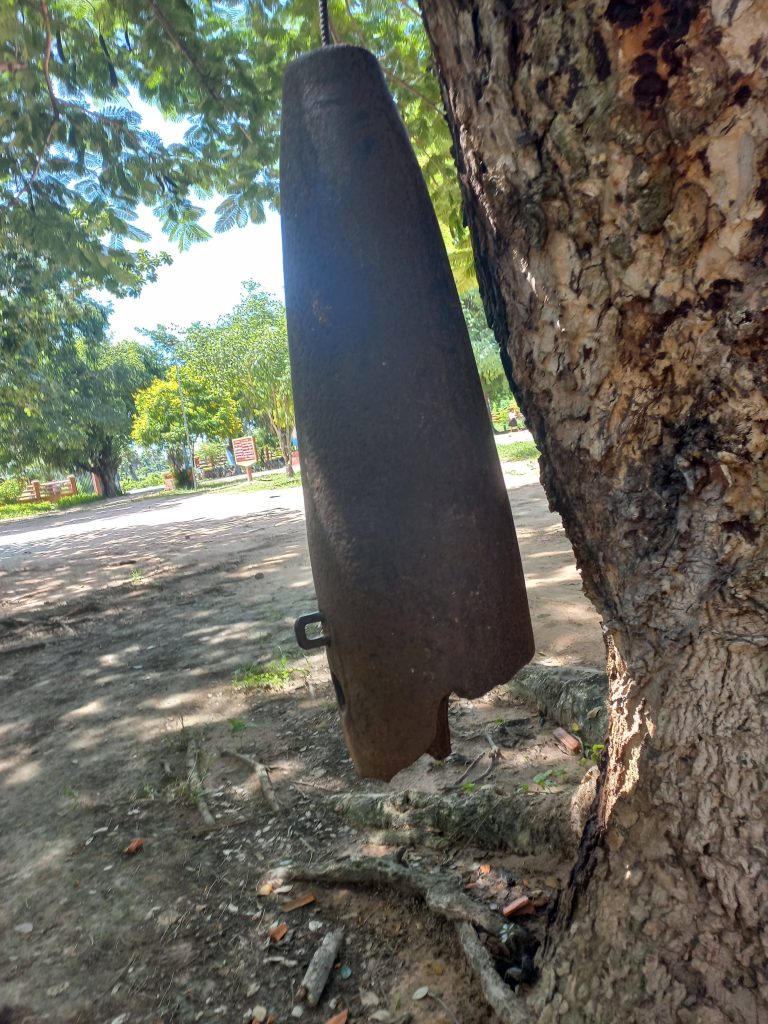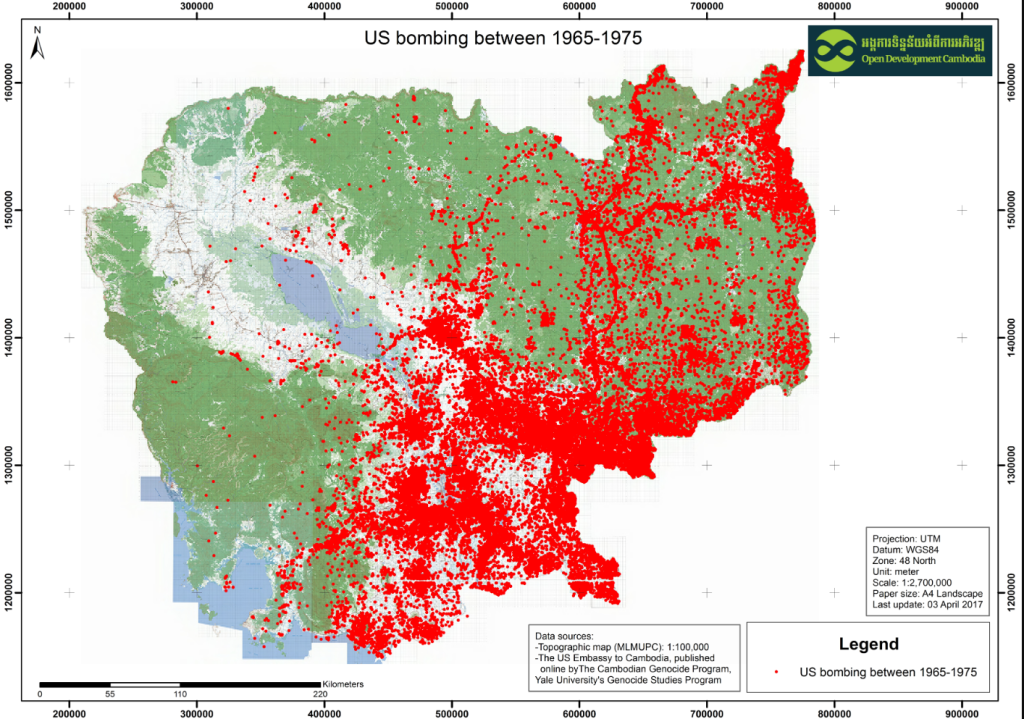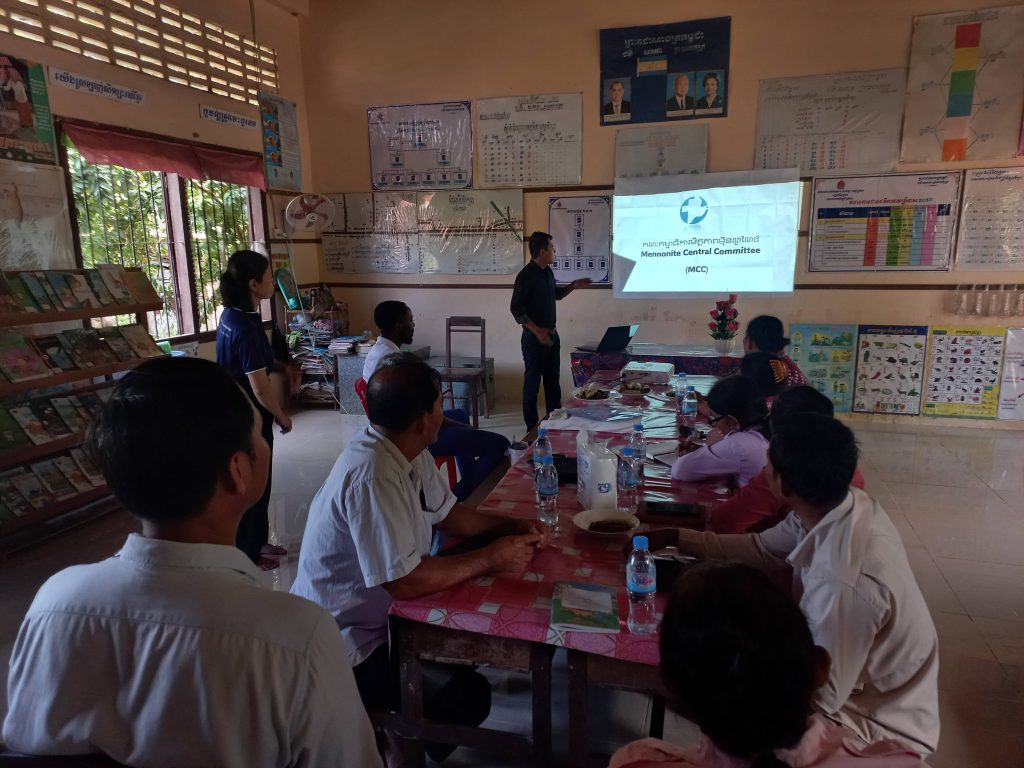Last month I traveled to Prey Veng province to sign Peace Club agreements with two new rural Primary Schools. I’ve written about the importance of doing this in person before – our work is about more than tasks, it’s about relationships.
Also, when I go to meet the people participating in our projects directly, I notice things that I wouldn’t have otherwise.

At the Prey Tompong Primary School in Ba Phnom district I noticed the school bell hanging from a tree and asked if it was a bombshell. The School Principal confirmed that it was the shell from an American bomb dropped on Cambodia decades ago.

This was a stark reminder that Cambodia, Laos, and Vietnam were once the most heavily bombed countries on earth. Prey Veng, located along the Ho Chi Minh trail, was especially heavily bombed by the US.
In 2022, Prey Veng province was finally declared landmine free but work continues to remove unexploded ordinance. As I wrote on my post then…
The tragedies of war do not end when the war ends. They linger long afterwards. Untreated trauma and mental illness. Unexploded ordinance. Destroyed infrastructure. Lost livelihoods and community. Disability. Landmines. Chemical poisons such as Agent Orange. Weapons of war left in the community. Even higher rates of diabetes after famine. There’s a temptation to label countries like Cambodia “post-conflict” and focus on what’s next – especially when the past is so painful – however the legacies of war don’t simply disappear. Healing takes sustained effort.

Peace Clubs are one way that we’re still diligently working to address the generational legacies of war, cultural revolution, and genocide. Cambodia’s traditional village level systems of conflict resolution and mediation were largely eradicated by the Khmer Rouge’s mass murder of the political, educated, and religious classes. Under our agreement with the Provincial Department of Education, we’re equipping Primary Schools to run the Peace Clubs themselves as part of their Life Skills class so that the lessons can be sustained even after our project ends so that community capacity to resolve conflict can be restored. The students are gaining practical skills in nonviolence, conflict resolution, trauma healing, and community building. Through interactive workshops, peer discussions, and community service, participants are empowered to become peacebuilders and positive change agents in their schools, families, and neighborhoods.
Amazing to be able to teach peace in countries that have experienced such violence and trauma in war